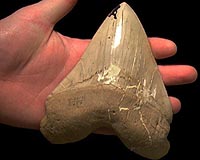| . |  |
. |
Hanoi (AFP) June 13, 2009 Researchers have begun testing mechanical "SediTurtles" they say will protect a legendary Vietnamese turtle while cleaning the historical lake in which the creature lives. Experts showed off the German-developed sediment-eating machines this week as part of preparations before an expected cleanup of Hoan Kiem Lake, the heart and soul of Vietnam's capital. Nestled in the centre of rapidly urbanising Hanoi, the so-called Lake of the Returned Sword is home to an elusive turtle which symbolises Vietnam's centuries-old struggle for independence. In a story that is taught to all Vietnamese school children, the 15th century rebel leader Le Loi used a magical sword to drive out Chinese invaders and founded the dynasty named after him. Le Loi later became emperor and one day went boating on the lake. A turtle appeared, took his sacred sword and dived to the bottom, keeping the weapon safe for the next time Vietnam may have to defend its freedom, the story says. Occasional sightings of a giant soft-shell turtle draw large crowds, and photographs and amateur video clips attest to the claim that at least one turtle indeed still lives in the lake. Reported sightings of the turtle, a symbol of eternity, are deemed auspicious, especially when they coincide with major national events. The site's historical importance therefore requires a delicate clean-up operation, and the joint team of Vietnamese and German experts have been planning how to clean the turtle's home with minimum risk to the creature. Leonhard Fechter, of Berlin's Herbst Umwelttechnik GmbH, said he knows people care about the turtle, so his company made the SediTurtle with a "soft" technology that will not harm the animal. "We are sure we won't touch the turtle," he said as he demonstrated the devices at a fish pond on the grounds of founding president Ho Chi Minh's former home. A thick red hose floating on the water was connected to what looked like a grey metal box. An attached dredging device was invisible below the surface, sucking out sediment from the bottom and sending it down the hose to another machine which separates sludge from water. The box moved with the slow, quiet movements of a turtle, winched along by ropes connected to a small blue boat. "That device is moving very slowly. That big turtle can easily escape" from its path, said Celia Hahn, the project manager from Dresden University of Technology. A second, more sophisticated SediTurtle resembles a giant corkscrew and operates by remote control "like a submarine", said Peter Werner, a professor from the same Dresden university. This less obtrusive option is Werner's preferred choice because it would not need unsightly ropes to pull it around the picturesque Hoan Kiem lake. Hoan Kiem has suffered the fate of all lakes. Over time, sediment increases and the water level drops, particularly in urban areas. The experts said Hanoi's much-photographed lake is only about 1.5 metres (five feet) deep -- close to half a metre at its shallowest -- but a four-to-six metre layer of sludge containing industrial pollutants has built up on the bottom. Draining the lake, the more conventional way of removing contaminants, is out of the question because it would destroy the treasured water body's entire ecosystem, experts said. "The big turtle is living from crabs or small fish," Werner said, adding that sediment removal will be done in phases, to ensure part of the lake is always left free for the animal. Christian Richter, of FUGRO-HGN GmbH, said his engineering firm has already assessed the lake's geology and hydrology. By the end of this year it will map areas of the lake where sediment can be removed without causing water to drain out, he said. The Vietnamese and German governments are funding the preliminary stages of the programme but financing is needed for the estimated 2.8 million dollar cleanup of Hoan Kiem to begin, the experts said. "There are banks interested in financing," Werner said. Hanoi next year will mark its 1,000th birthday, and the lake cleanup was initially expected to be finished in time for the celebration. That deadline cannot be met because of the care with which sediment removal must be done, the engineers said. "Even if they start immediately, they would need at least one or two years for the removal," Richter said.
Share This Article With Planet Earth
Related Links Darwin Today At TerraDaily.com
 Bone Bed Tells Of Life Along California's Ancient Coastline
Bone Bed Tells Of Life Along California's Ancient CoastlineBerkeley CA (SPX) Jun 12, 2009 In the famed Sharktooth Hill Bone Bed near Bakersfield, Calif., shark teeth as big as a hand and weighing a pound each, intermixed with copious bones from extinct seals and whales, seem to tell of a 15-million-year-old killing ground. Yet, new research by a team of paleontologists from the University of California, Berkeley, the University of British Columbia in Vancouver, Canada, and the ... read more |
|
| The content herein, unless otherwise known to be public domain, are Copyright 1995-2009 - SpaceDaily. AFP and UPI Wire Stories are copyright Agence France-Presse and United Press International. ESA Portal Reports are copyright European Space Agency. All NASA sourced material is public domain. Additional copyrights may apply in whole or part to other bona fide parties. Advertising does not imply endorsement,agreement or approval of any opinions, statements or information provided by SpaceDaily on any Web page published or hosted by SpaceDaily. Privacy Statement |